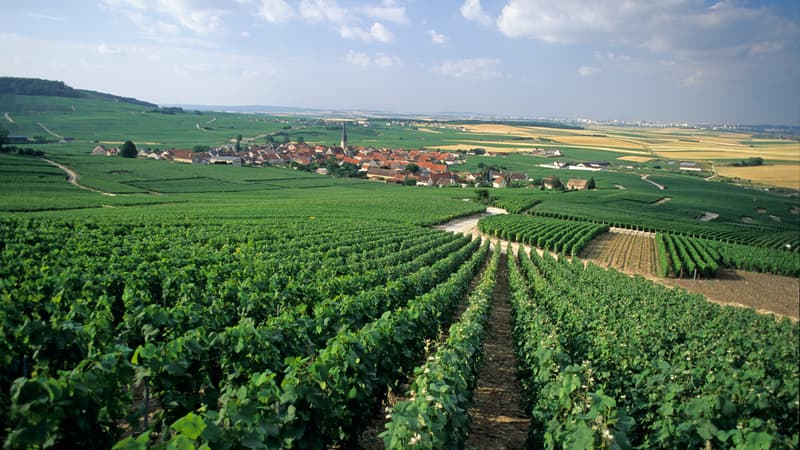“It feels like we’re walking through a painting,” exclaims Tyler Ryan, an American tourist visiting the Pavillon Ruinart in Reims, one of the showcases for Champagne’s wine tourism boom, ten years after its inclusion on the UNESCO World Heritage list. The oldest champagne house, owned by luxury giant LVMH, has transformed its public reception over the last year with this pagoda-shaped pavilion designed by Sou Fujimoto, one of the stars of contemporary Japanese architecture, along with its crayères, those deep natural chalk cellars that can be visited.
Tyler Ryan, an employee of the Milwaukee Bucks NBA basketball franchise, and his wife Taylor, a nurse, explain that they came to France to celebrate the one-year anniversary of their honeymoon. In two stages: Champagne and then Paris. Trump imposes taxes or not, “we already drank champagne on special occasions and we will continue to drink it,” the couple smiles. Wine tourism “has taken off like never before, with an audience that is no longer the same”, these are “people who travel above all for wine”, estimates Olivier Livoir, “head of hospitality” at Ruinart.
+30% local jobs
A welcome growth engine for the champagne sector, affected since this year by US customs duties on European products. Ten years after the inclusion of its slopes, houses and wineries in the world heritage, wine tourism “is booming” in Champagne, also notes Séverine Couvreur, president of the UNESCO Mission.
An impressive number of projects have emerged in recent years: renovation of the Champagne wine museum in Épernay, conversion of the old Pommery winepresses into an interactive museum in Aÿ-Champagne, luxury hotels and restaurants that combine gastronomy and tasting. Taittinger opened his own restaurant in Reims in June. Among other initiatives, the Dom Pérignon house (LVMH) will begin in December the restoration of the ancient abbey of Saint-Pierre d’Hautvillers, the birthplace of champagne, for a planned reopening in 2028 under the sign of wine tourism.
In an old mansion in the heart of Reims, the young Thiénot house opened “Le 3” in September, a place that offers an immersive wine tourism circuit on 5,000 m2, which will soon be flanked by a five-star hotel and a champagne bar. “The rise of wine tourism in Champagne gave rise to this idea,” explains Olivier Lamaison, general director of “3”. There is “a strong commercial interest” in this project, acknowledges Stanislas Thiénot, co-director of this independent house and eager to address more to the general public.
The number of overnight stays in Reims increased by more than 60% between 2016 and 2023, reaching 1.8 million. And jobs in local tourism increased more than 30% during the same period to reach 8,240 positions, according to a recent survey by the planning, development and forecasting agency of the Reims region.
“Avoid overtourism”
“This increase in employment is homogeneous throughout the territory” and “especially notable in peripheral areas”, emphasizes Séverine Couvreur. Because the UNESCO registry goes beyond the “central zones” such as Reims and Épernay, and also covers 320 cities and towns of the AOC Champagne in the Marne, Aube and Aisne. In this way “we also manage to avoid overtourism” because “there is not a single place that can be visited, but rather a multitude of experiences,” he continues to praise. The UNESCO Mission now wants to anticipate “flows that favor mobility, so that residents do not suffer,” he adds.
Starting in 2023, Hautvillers and Aÿ-Champagne have issued decrees limiting the number of tourist rentals authorized in their municipalities. Epernay has just imitated them, while the number of these listed furnished accommodations in the city – more than 420 – has multiplied by ten since 2019, according to the city council. In Aÿ-Champagne, local investors, as well as foreigners, “bought quite important properties” and at a high price and then “redivided them”, explains Dominique Collard, mayor of this town.
Source: BFM TV


